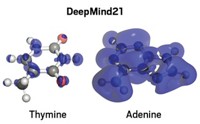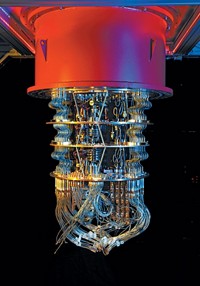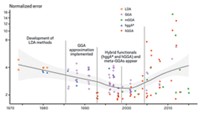Advertisement
Grab your lab coat. Let's get started
Welcome!
Welcome!
Create an account below to get 6 C&EN articles per month, receive newsletters and more - all free.
It seems this is your first time logging in online. Please enter the following information to continue.
As an ACS member you automatically get access to this site. All we need is few more details to create your reading experience.
Not you? Sign in with a different account.
Not you? Sign in with a different account.
ERROR 1
ERROR 1
ERROR 2
ERROR 2
ERROR 2
ERROR 2
ERROR 2
Password and Confirm password must match.
If you have an ACS member number, please enter it here so we can link this account to your membership. (optional)
ERROR 2
ACS values your privacy. By submitting your information, you are gaining access to C&EN and subscribing to our weekly newsletter. We use the information you provide to make your reading experience better, and we will never sell your data to third party members.
Physical Chemistry
Martin Karplus, Michael Levitt, And Arieh Warshel Honored For Their Computational Methods To Study Complex Chemical Systems In Action
2013 Nobel Prize In Chemistry
by Stu Borman
December 23, 2013
| A version of this story appeared in
Volume 91, Issue 51
COVER STORY
Nobel Prize: Three Chemists Win For Computer Modeling
Theoretical chemists are sometimes misunderstood and often underappreciated. But this year, the Royal Swedish Academy of Sciences had a clear understanding of the achievements of three prominent theoreticians on whom it bestowed the Nobel Prize in Chemistry—Martin Karplus of the University of Strasbourg, in France, and Harvard University; Michael Levitt of Stanford University School of Medicine; and Arieh Warshel of the University of Southern California (C&EN, Oct. 14, page 5). The academy honored this gang of three “for the development of multiscale models for complex chemical systems.” This phrase refers to key contributions made by Karplus, Levitt, and Warshel over four decades to developing computational methods that predict how chemical reactions occur and proteins fold—without the need to first run any actual reactions or fold any actual proteins to find out. From a technical standpoint, they combined two things: quantum mechanics (QM), a rigorous mathematical description of how atoms and electrons move and interact, and molecular mechanics (MM), a method that uses mathematical approximations to model molecular behavior. The resulting combination, called QM/MM, predicts the behavior of chemical reactions and processes quite accurately without requiring a lifetime of computer crunching to do so, as QM alone would necessitate. QM/MM is now a state-of-the-art approach that scientists and engineers use for simulating chemical processes—not only for drug discovery and tracking reaction mechanisms but also to improve fundamental understanding of chemical structure and bonding. It’s information that would be hard to ferret out any other way.








Join the conversation
Contact the reporter
Submit a Letter to the Editor for publication
Engage with us on Twitter